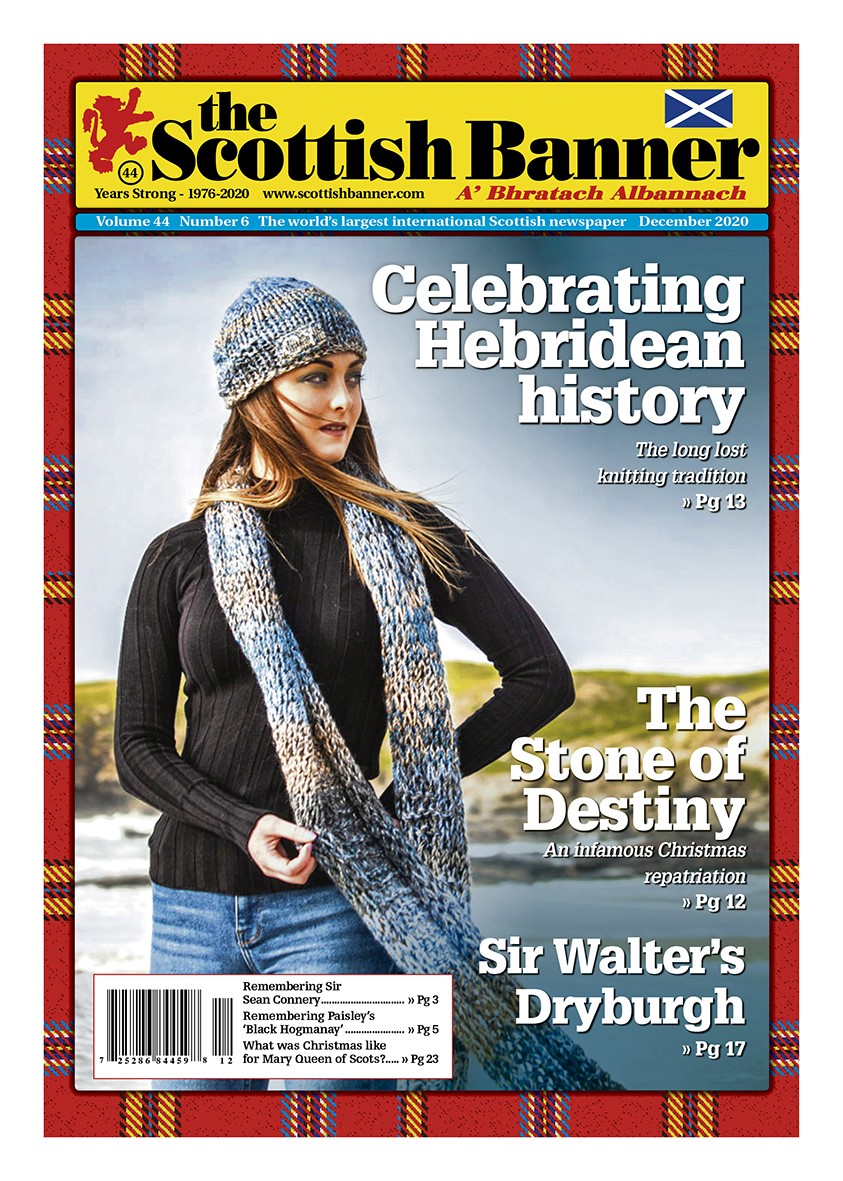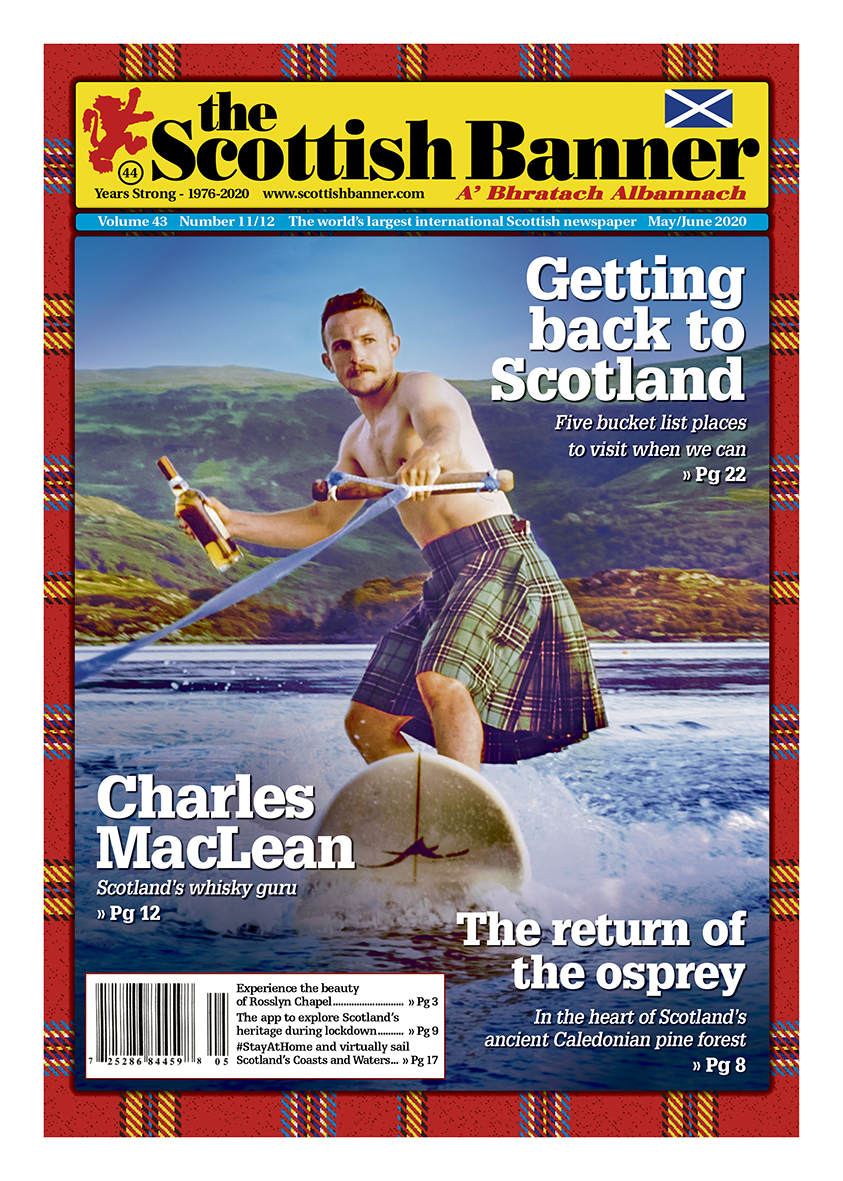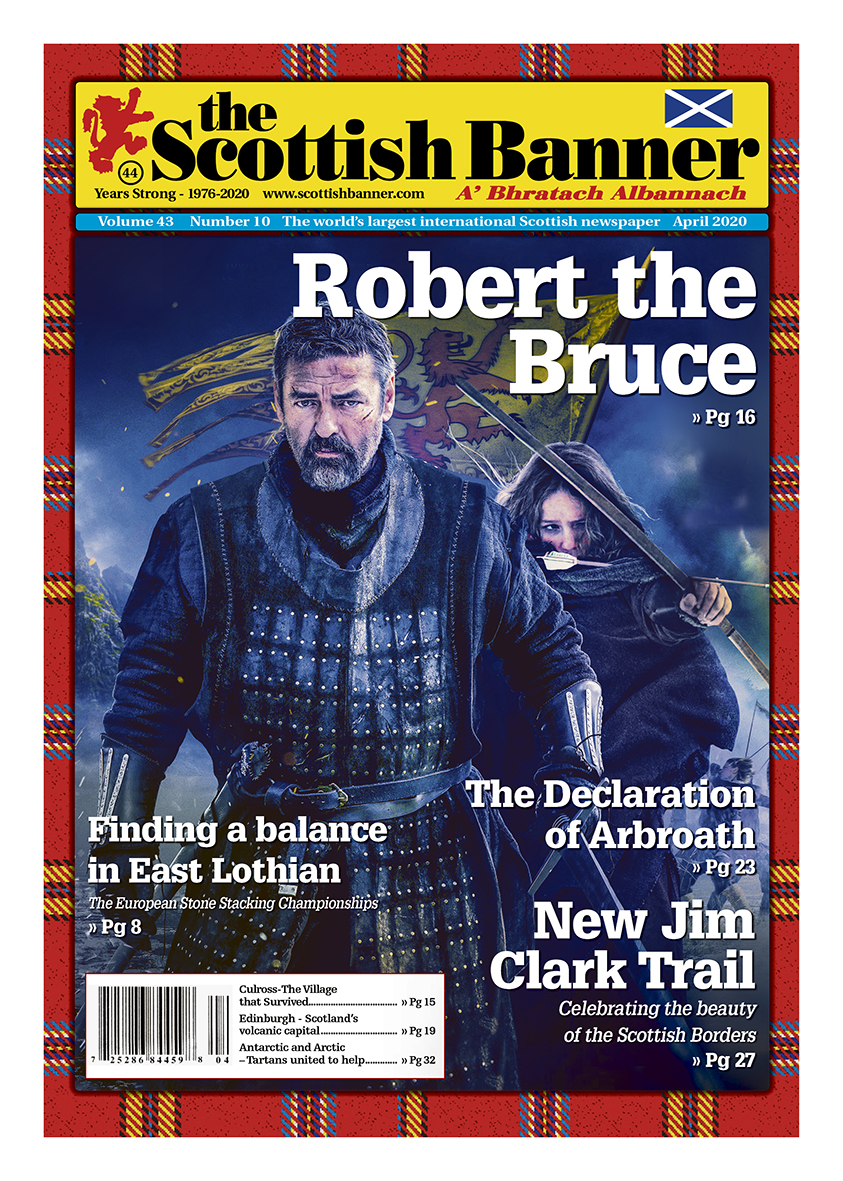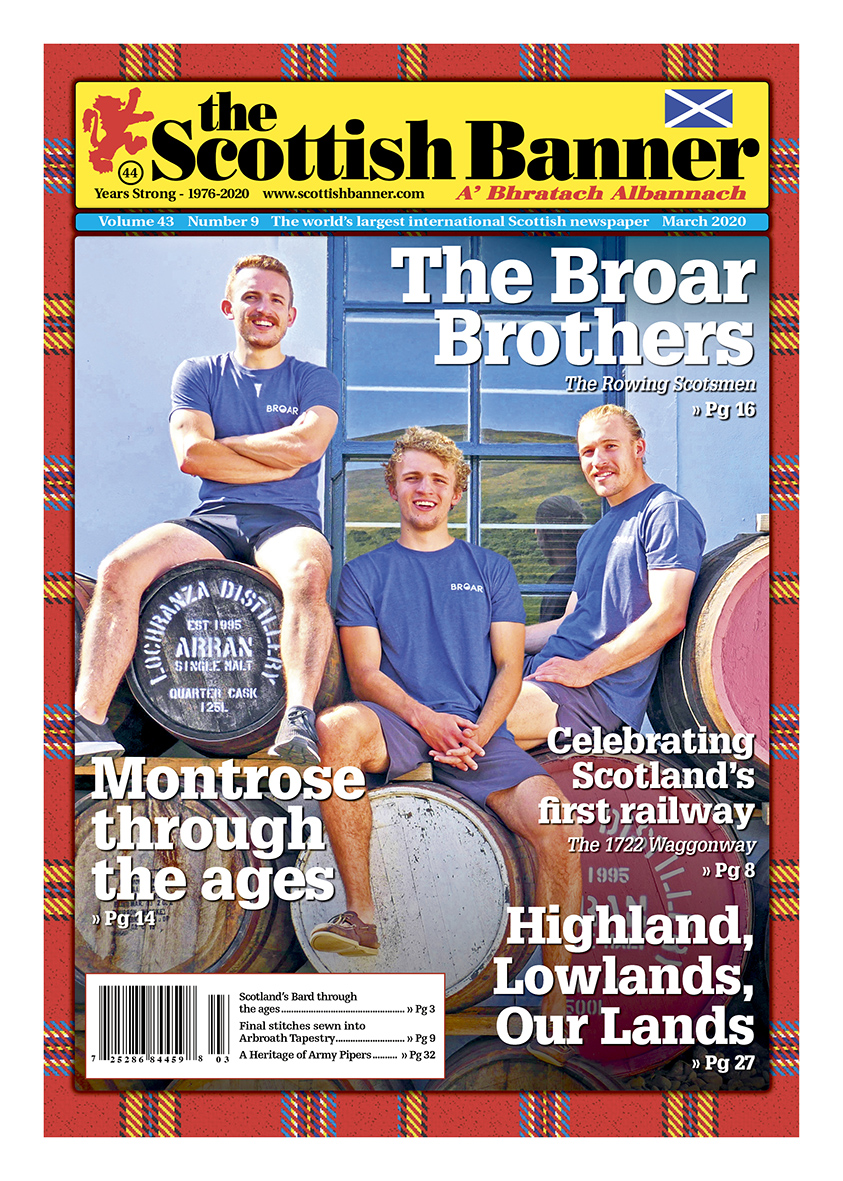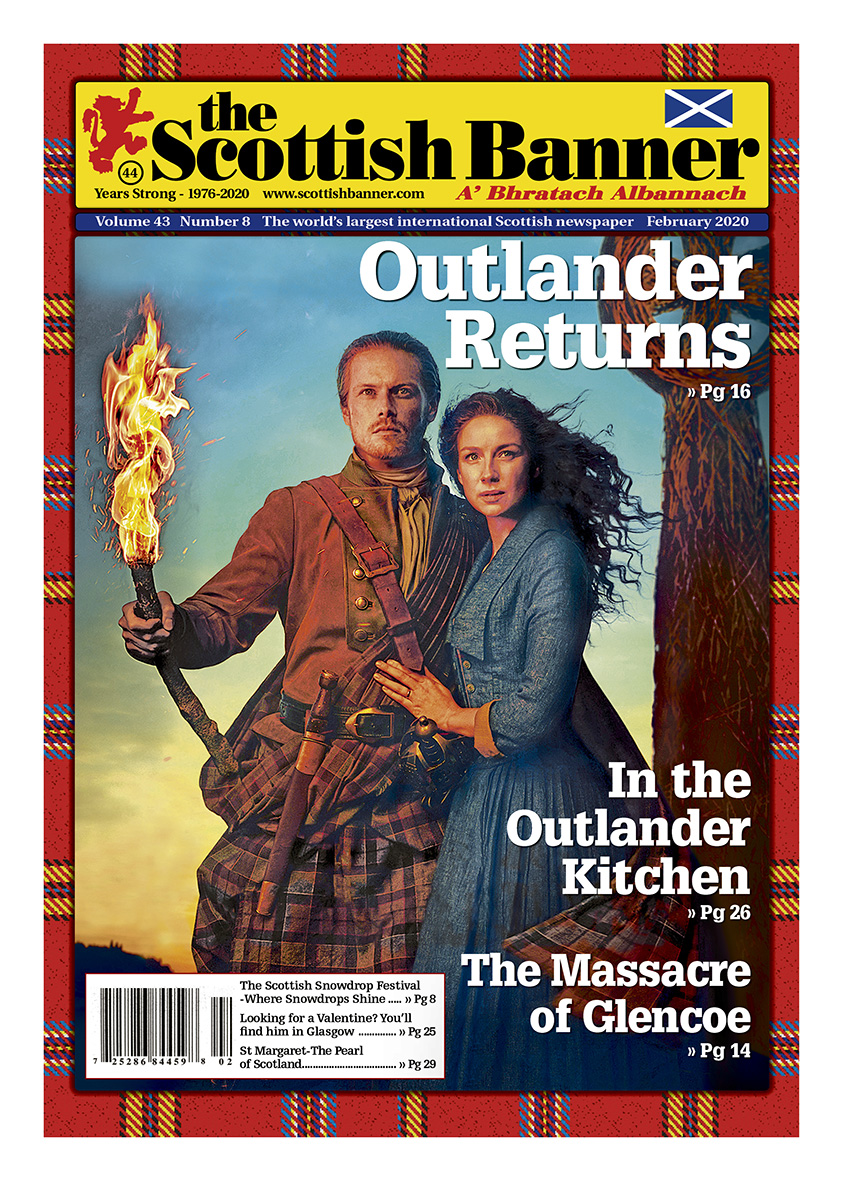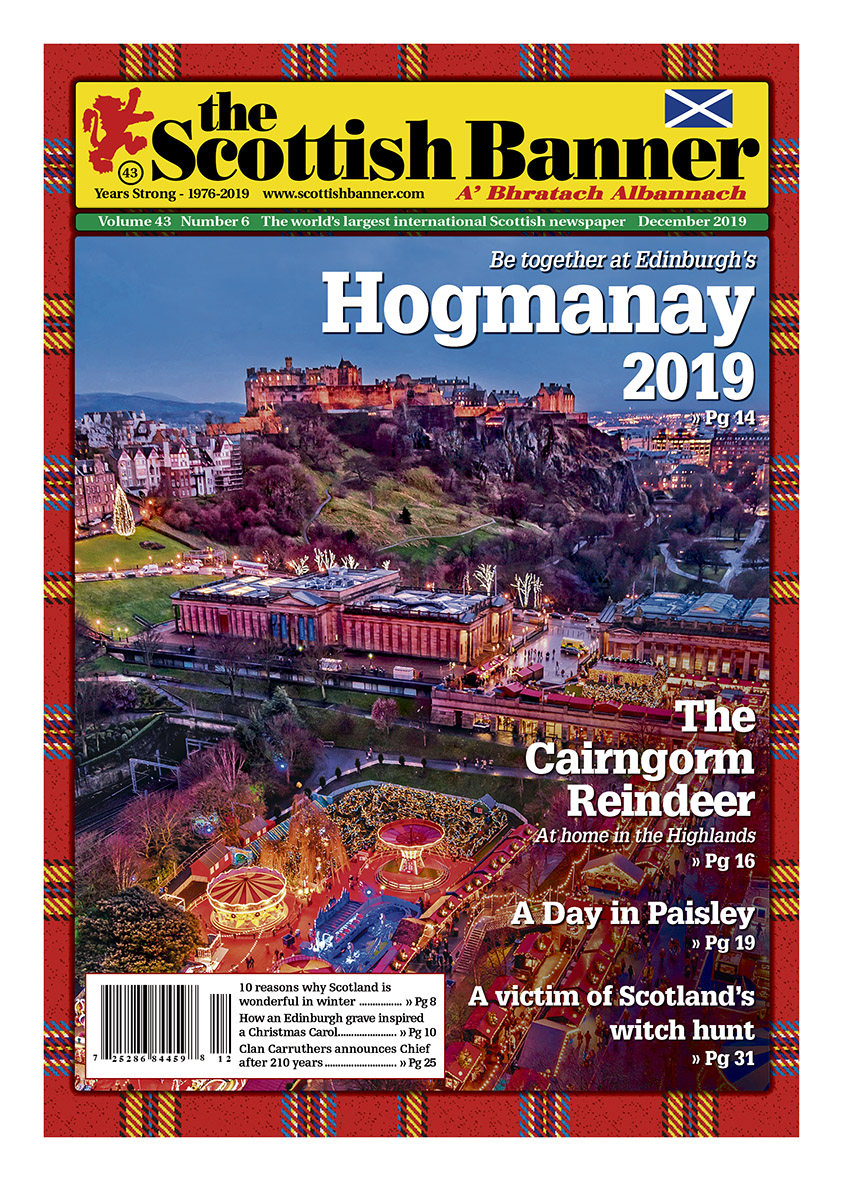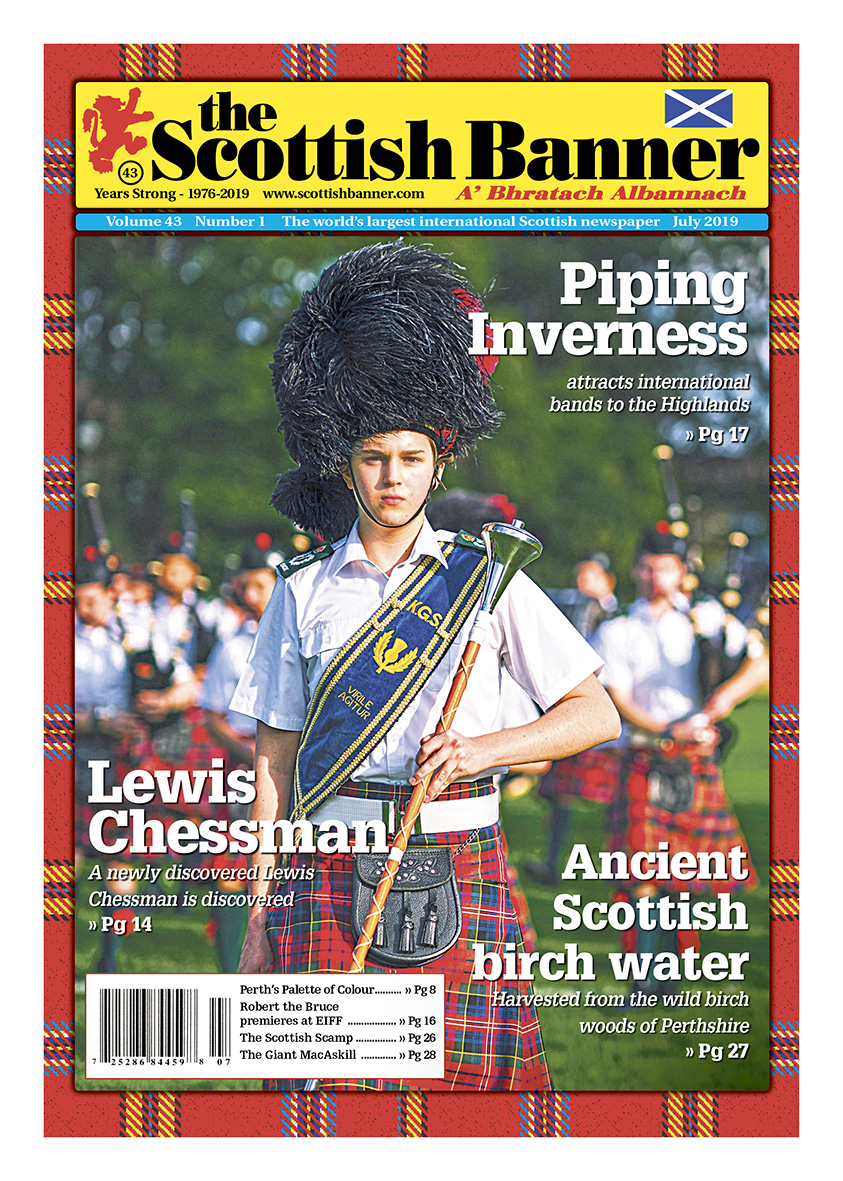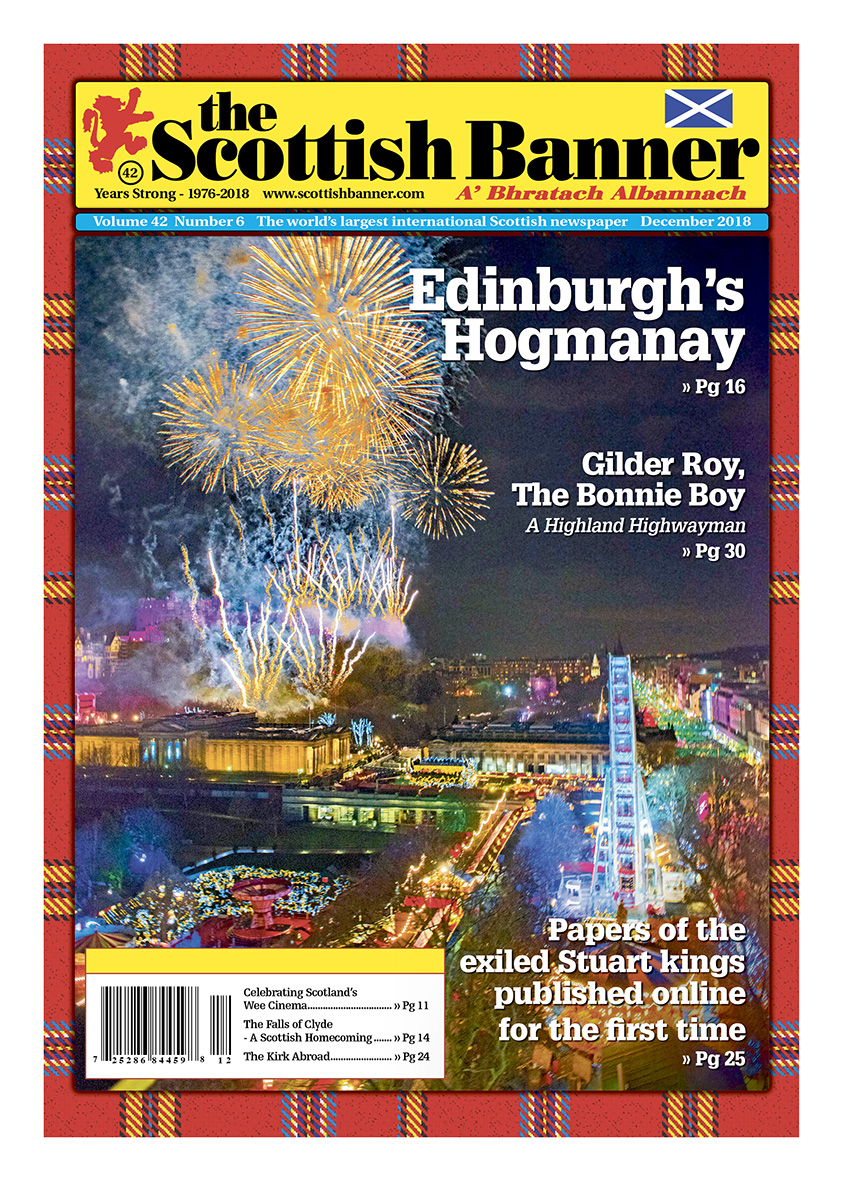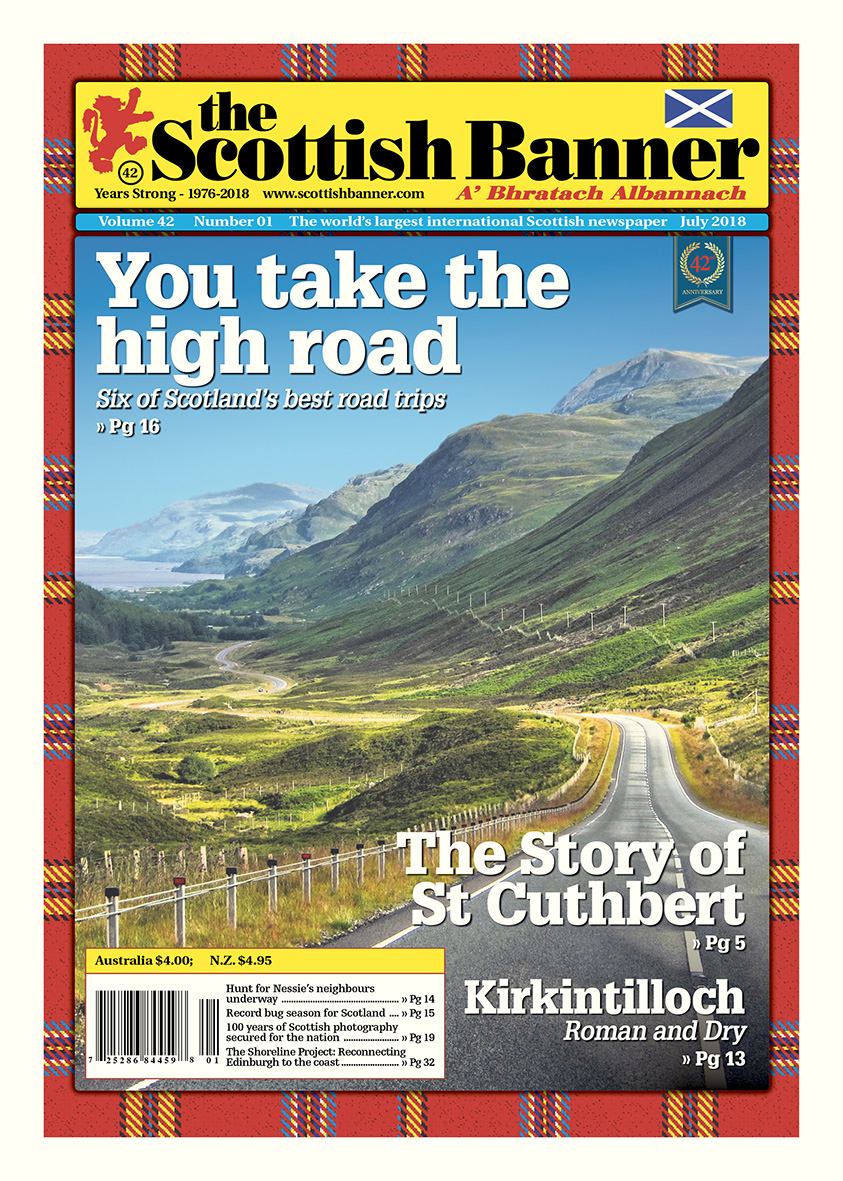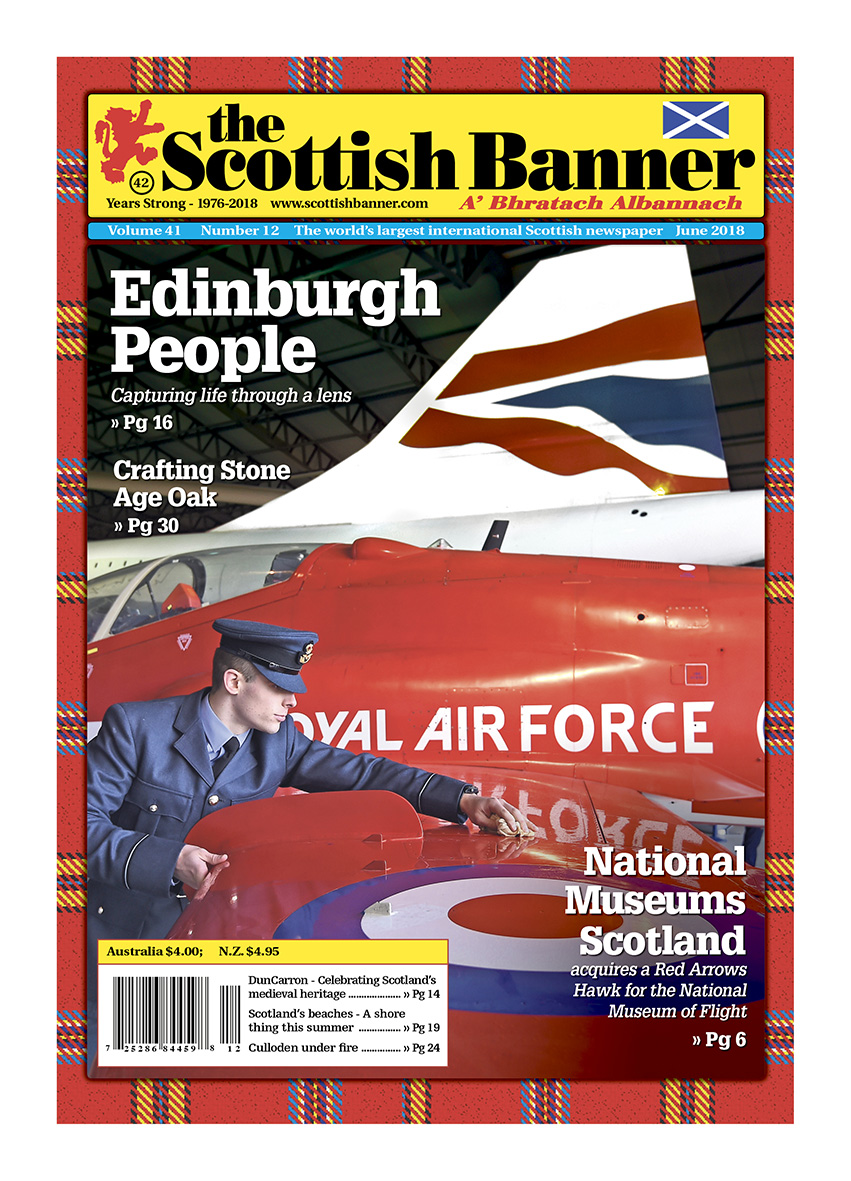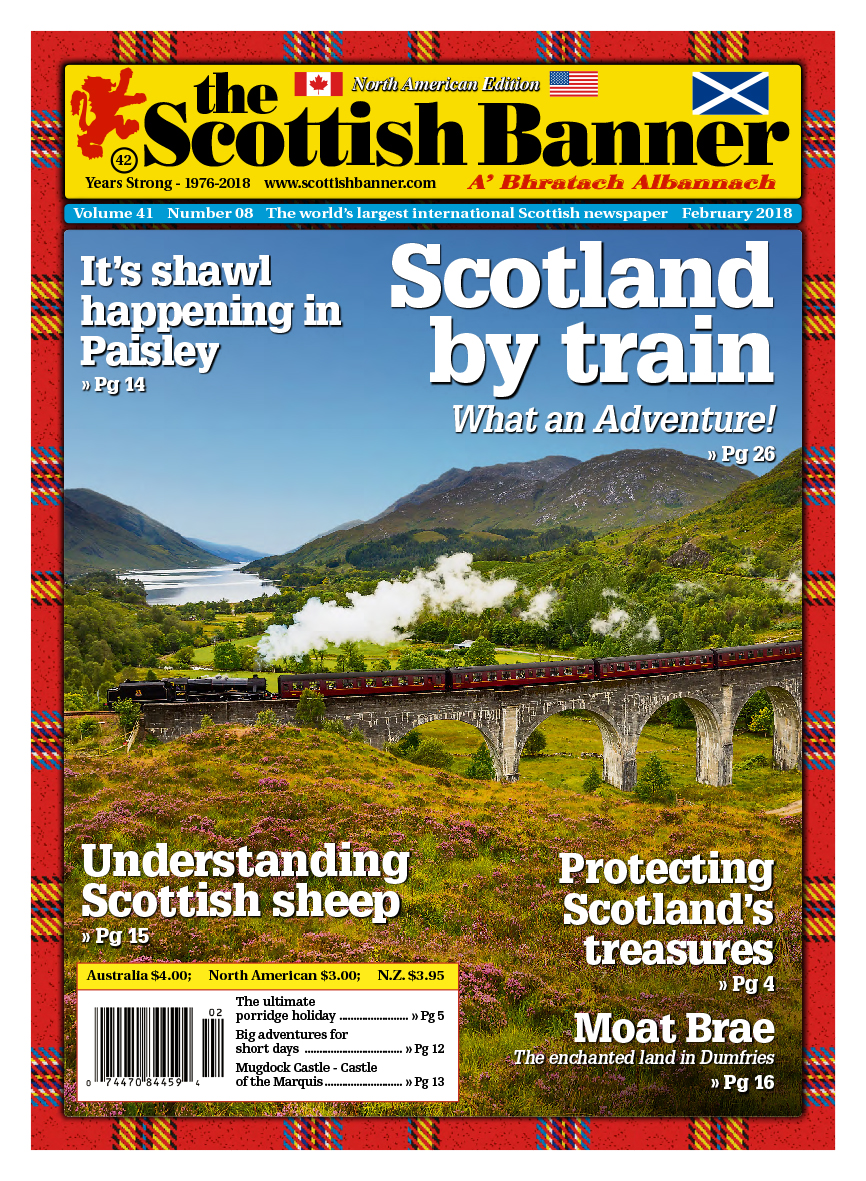March 2021 (Vol. 44, Number 09)
The Banner Says…
Celebrating the women of Scotland
Scotland’s history is incredible and it is no wonder the story of Scotland is a film producer’s dream, all the gore, twists and dramatic locations. Many Scots of course have left their mark and became notable in Scottish history, and we of course hear of William Wallace, Robert the Bruce and Robert Burns, to name a few but what about the incredible contribution of women?
This month, on March 8th, is International Women’s Day- a celebration of women’s achievement and I certainly have been brought up around strong women and grew up with many who I have no doubt have shaped who I am today.
Some may immediately think of Mary, Queen of Scots, who was beheaded for treason, as a female Scottish icon. There is no doubt that the life of Mary, Queen of Scots would
rival any modern epic, but some may struggle to remember many more. That of course could be explained by women’s standing in history and their achievements never being recorded or potential allowed to be fulfilled.
Elsie Inglis
Elsie Inglis was born in 1864, and studied in both Paris and Edinburgh, she went on to study medicine and become a qualified surgeon. Whilst working at hospitals in Scotland, Elsie was shocked to discover how poor the care provided to poorer female patients was. Elsie would go on to set up a hospital in Edinburgh just for women, often not accepting payment. Elsie went on join the women’s suffrage campaign in 1900, and campaigned for women’s rights across Scotland. In 1914 Elsie offered to take an all-female medical unit to the front lines, she was told it was ridiculous, however she dispatched the first of 14 all-women medical units to Serbia, to assist the war effort.
Her Scottish Women’s Hospitals went on to recruit more than 1,500 women to treat thousands of soldiers across both Western and Eastern Europe. Elsie sadly died at just aged 53 and thousands of people lined the streets of Edinburgh for her funeral. Elsie is still a hero in Serbia, with streets and buildings named after her and she appears on the Clydesdale Bank £50 note.
The Edinburgh Seven
Sophia Jex-Blake, Isabel Thorne, Edith Pechey, Matilda Chaplin, Helen Evans, Mary Anderson and Emily Bovell have come to be known as the Edinburgh Seven. They were the first group of matriculated undergraduate female students at any British university. The women began studying medicine at the University of Edinburgh in 1869 and although they were ultimately
prevented from graduating with a medical degree, they campaigned to ensure that women and men were taught the same, tested the same and if successful, awarded the same degrees.
Their fight gained national attention and put the rights of women to a full and equal university education on the national political agenda. Legislation was eventually passed, seven years later, to enable women to enter both the medical profession and universities (UK Medical Act 1876). The University of Edinburgh allowed women to graduate in 1894 and the first doctors graduated in 1896.
Madge Easton Anderson
Born in Glasgow in 1896, Madge Easton Anderson became a female pioneer for her generation, becoming the first woman to work professionally as a lawyer in the UK when she qualified in 1920. Not only was Madge the first female solicitor in Scotland, but she went on to become the first woman to qualify to practise law in both England and Scotland and a partner in the first known law firm to be led entirely by women. Madge was just one of only a handful of women in her university classes, and the only female lawyer in the UK at one point, she paved the way for a profession which is, today, 51% female.
Maggie McIver
Another Glasgow woman who certainly made her mark was Maggie McIver “the Barras Queen”. Her rags to riches tale read’s like something out of a fictional novel. Born in Ayrshire in 1879, Maggie began life as a barrow girl selling fruits and fish. She and her husband had such success renting barrows to other hawkers that they went on to open the Barras Market in 1920, over a 100 years later it is still the place to go in Glasgow for a bargain. Maggie then went on to open the Barrowland Ballroom on Christmas Eve 1934.
As legend has it, the usual place she booked for the hawkers annual Christmas dance was booked so they decided to build their own ballroom. Maggie was a multi-millionaire by the time she died in 1958 and the Barrowland Ballroom is still today known as one of the best live music venues in the UK.
Flora MacDonald
The famous Scottish melody the Skye Boat Song, owes its origins to the daring mission of mercy undertaken by Flora MacDonald, a young Highland woman who risked her life out of compassion for a fugitive Prince who had staked everything on a bid to win a kingdom and lost. Flora MacDonald is famously known for helping Bonnie Prince Charlie escape from Scotland after the defeat of the Jacobite’s in the Battle of Culloden in 1746. Bonnie Prince Charlie (Prince Charles Edward Stuart) led the second Jacobite Uprising of 1745 to overthrow King George II.
Flora was visiting her brother in South Uist when she met Bonnie Prince Charlie, then fleeing from the Redcoats following his April defeat at Culloden. The part that Flora played in the escape ‘over the sea to Skye’ is immortalised in the Skye Boat Song, published in 1884, and a song more recently made famous in the opening of the hit TV show Outlander.
In this issue
Speaking of Outlander, this month we celebrate the launch of the new TV show Men in Kilts: A Roadtrip with Sam and Graham. At a time when people cannot travel internationally this show is a great escape to Scotland, from your very own armchair. Whilst readers of the Scottish Banner will no doubt have seen many of these topics covered in our pages over the decades, it is so wonderful to see Scotland again playing a starring role for millions to enjoy.
It is 100 years ago this month that Haddingtonshire became East Lothian. The region offers over 40 miles of stunning coastline, history, golf courses, rolling hills and historic properties and is the home of Scotland’s Saltire flag (having originated in a battle fought in East Lothian). This region has much to offer and make it a stop on your next visit to Scotland.
The contribution of Scottish women
The contribution of Scottish women has often been overlooked but does not lesson the great impact they have made across Scotland, and the world. Today Scotland’s leader is of course First Minister Nicola Sturgeon, who is also the Leader of the Scottish National Party and the first woman to hold either position. Scotland has moved on and Scottish women are continuing to make their mark in a variety of professions and across society. I have mentioned but just a few of the incredible women who have made a difference to Scotland and paved a path for women across the world today. And it is with no doubt that our world is a better place due to them…
Have you been inspired by a great Scottish woman (famous or not)? Do you have you any comments from the content in this month’s edition? Share your story with us by email, post, social media or at: www.scottishbanner.com/contact-us
#ScottishBanner, #TheBanner
Covid-19 is having a major impact on many of our regular advertisers, with events being cancelled and businesses suffering. The Scottish Banner is more reliant than ever on our readers helping us to provide you with our unique content by buying a copy of our publication, regardless if by print or digital subscription or at a retail outlet.
We appreciate your support and hope you enjoy this edition.




